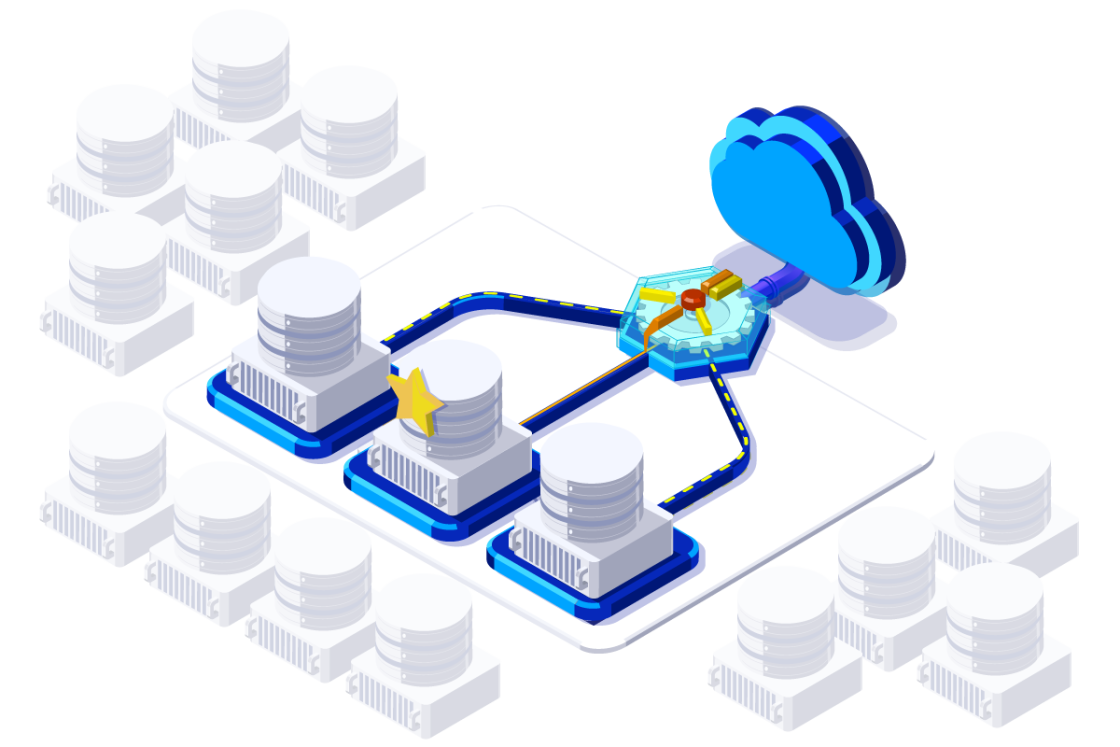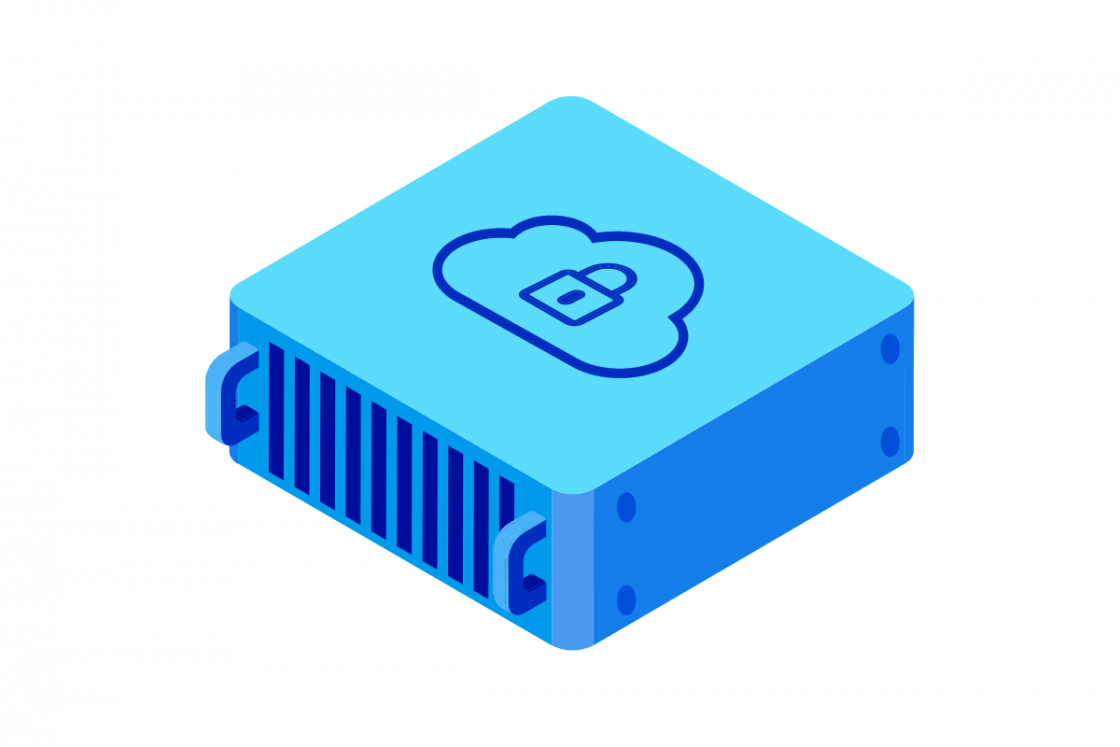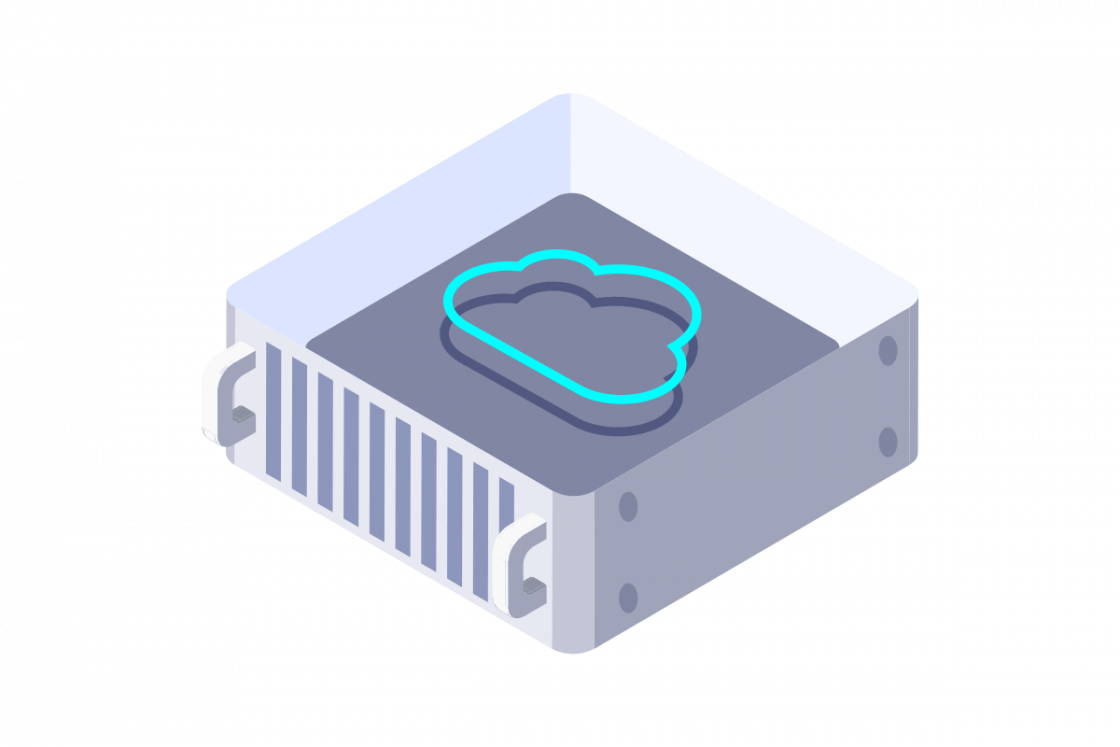What is cloud architecture?
Cloud computing has fundamentally transformed the way businesses and individuals access and manage computing resources. By leveraging the power of the internet, cloud computing eliminates the dependency on local servers and physical storage, allowing for more flexible, scalable, and cost-effective solutions.
Organizations can allocate resources dynamically and on a hybrid basis, adapting to fluctuating demands without the constraints of physical hardware. In modern enterprises, cloud architecture is a critical component, enabling seamless data processing, collaboration, and application deployment.

The cloud network has also facilitated global connectivity, allowing businesses to operate across geographies and end the need for significant infrastructure investments to do so. This document explores the essential elements of cloud architecture, its service models, providers, and design principles, providing a comprehensive guide to understanding and implementing cloud-based solutions.
Through a deep dive into cloud computing, readers will gain insights into its transformative potential, the challenges involved, and the strategies required to maximize its benefits.
Definition and Overview
Cloud architecture refers to the structured framework that enables cloud computing by integrating various technological components, including servers, databases, networking, virtualization, and software services.
This architecture design is intended to facilitate the efficient delivery of computing services over the internet, enabling businesses and individuals to optimize their operations. By utilizing a well-structured cloud architecture, companies can ensure high availability, fault tolerance, and redundancy, leading to improved reliability and reduced downtime.
Cloud computing itself is a technology paradigm that leverages remote servers hosted on the internet to store, manage, and process data, rather than relying on local infrastructure. By utilizing cloud computing, organizations can reduce hardware investments, streamline IT management, and enhance scalability and flexibility.
The cloud design model also fosters innovation by allowing companies to rapidly deploy and test new applications without the need for significant upfront infrastructure investment.
Furthermore, cloud computing supports a pay-as-you-go model, ensuring that businesses only pay for the resources they consume, minimizing unnecessary expenditures. With advancements in artificial intelligence and machine learning, cloud computing has become an enabler for automation, analytics, and data-driven decision-making, further enhancing business efficiency and competitiveness.
Key Components of Cloud Architecture
Cloud computing design and architecture has revolutionized the way businesses and individuals access and manage computing resources.
By leveraging cloud infrastructure, organizations can scale efficiently, reduce operational costs, and in the end enhance system reliability. This guide explores key components of cloud infrastructure, including servers, databases, networking, virtualization, and software services. Understanding these elements is essential for optimizing cloud-based solutions and ensuring seamless performance in modern IT environments.
- Servers: Cloud servers are virtual or physical machines that provide computing resources such as processing power, memory, and storage. They are typically managed by cloud providers and can be scaled dynamically based on demand.
- Databases: Cloud databases are designed to store and manage large volumes of data efficiently. They support various data models, including relational, NoSQL, and graph databases, and offer features like data replication and backup for high availability.
- Networking: Cloud networking involves the setup and management of virtual networks, subnets, and security groups to ensure secure communication between resources within the cloud environment. It also includes services like load balancing and content delivery networks (CDNs) to enhance performance and availability.
- Virtualization: Virtualization technology allows multiple virtual machines (VMs) to run on a single physical server, maximizing resource and network utilization and flexibility. It is a core component of cloud infrastructure, enabling the creation of scalable and on-demand computing environments.
- Software Services: Cloud software services include operating systems, middleware, and application software that are delivered over the internet. These services are managed by cloud providers, ensuring automatic updates and maintenance.
Benefits of Cloud Architecture
Cloud network architecture design allows businesses to scale resources up or down based on demand, taking a hybrid approach if needed, ensuring optimal performance and cost-effectiveness.
It enables employees to access applications and data from anywhere, enhancing remote work capabilities and improving collaboration across geographically dispersed teams.
By reducing the need to design and use physical infrastructure, cloud computing lowers maintenance and operational expenses, providing flexible pricing structures based on actual usage.
Cloud providers implement robust network security measures, including encryption, multi-factor authentication, and compliance with regulatory standards, ensuring data protection and business continuity.
Cloud Computing
Cloud network computing itself is a technology paradigm that leverages remote servers hosted on the internet to store, manage, and process data, rather than relying on local infrastructure. By utilizing public cloud computing, organizations can reduce hardware investments, streamline IT management, and enhance scalability and flexibility.
The cloud network model also fosters innovation by allowing companies to use and deploy and test new applications without the need for significant upfront infrastructure investment. Furthermore, cloud computing supports a pay-as-you-go model, ensuring that businesses only pay for the resources they consume, minimizing unnecessary expenditures.
Advantages of Cloud Computing
Cloud computing eliminates the need for upfront investments in hardware and infrastructure, reducing capital expenditures and allowing businesses to allocate resources more efficiently. Cloud resources can be scaled dynamically to meet fluctuating demands, ensuring optimal performance during peak periods and minimizing waste during low-usage periods.
Cloud computing enables businesses to access applications and data from any location, facilitating remote work and improving collaboration across different geographies. Cloud computing and network providers manage the underlying network infrastructure, freeing IT teams from maintenance tasks and allowing them to focus on strategic initiatives.
The cloud enables rapid deployment and testing of new applications, fostering innovation and agility in business operations.
Role of AI and Machine Learning in Cloud Computing
With advancements in artificial intelligence (AI) and machine learning (ML), cloud computing has become an enabler for companies looking to use automation, analytics, and data-driven decision-making, further enhancing business efficiency and competitiveness. Cloud network providers offer AI and ML services that can be integrated into applications to improve performance, predict customer behavior, and automate processes. These services include:
- Data Analytics: Cloud-based analytics tools help businesses process large datasets to gain insights and make informed decisions.
- Automation: AI-powered automation tools can streamline business processes, reduce manual errors, and improve operational efficiency.
- Predictive Modeling: ML algorithms can be used to predict market trends, customer preferences, and potential risks, enabling proactive decision-making.
Types of Cloud Services
Cloud computing services are classified into three primary models, each serving different needs and use cases.
Infrastructure as a Service (IaaS)
IaaS provides virtualized computing resources over the internet, including for hybrid cloud, offering fundamental infrastructure components such as virtual machines (VMs), storage, and networking. IaaS allows organizations to scale their IT resources dynamically, reducing reliance on physical hardware.
It provides users with greater control over their computing environment while eliminating the complexities of maintaining physical infrastructure. Companies leveraging IaaS can benefit from enhanced disaster recovery options, rapid provisioning of new environments, and seamless integration with existing systems.
Benefits of IaaS
IaaS resources can be scaled up or down quickly to match changing business needs. By using virtualized resources, businesses can avoid upfront hardware costs.
Users have full control over the configuration and management of their virtual infrastructure. IaaS supports dynamic workloads efficiently, ensuring optimal performance during peak periods.
IaaS is ideal for hosting web applications, allowing businesses to manage their infrastructure without physical hardware. It supports big data processing by providing scalable storage and computing resources.
IaaS enables rapid deployment of backup environments for disaster recovery. It supports virtual desktop infrastructure (VDI) for remote work environments. IaaS is used for high-performance computing tasks such as simulations and data processing.
Platform as a Service (PaaS)
PaaS offers a cloud-based platform that enables developers to build, deploy, and manage applications without worrying about underlying infrastructure complexities. It provides essential development tools, runtime environments, middleware services, and database management solutions.
PaaS simplifies application development by offering pre-configured environments, automated scalability, and integration with third-party services.
Benefits of PaaS
PaaS provides pre-configured environments that speed up application development. Developers focus on coding while the cloud provider manages the underlying infrastructure. Applications can be deployed quickly, reducing time-to-market.
PaaS platforms often include built-in security features to protect applications. PaaS supports collaboration among development teams by providing shared environments. PaaS is ideal for developing web and mobile applications quickly.
It supports database management services, making it easier to manage and scale databases. PaaS is used for developing and deploying enterprise software solutions. It supports the development of microservices-based applications. PaaS is used for building and managing APIs.
Software as a Service (SaaS)
SaaS delivers software applications over the internet, typically on a subscription basis. Users can access applications from any device with an internet connection, eliminating the need for local installation and maintenance.
SaaS solutions are managed by cloud providers, ensuring automatic updates, security patches, and high availability. Organizations benefit from reduced IT complexity, cost savings, and improved accessibility.
Benefits of SaaS
Users can access applications from anywhere, enhancing remote work capabilities. Cloud providers manage updates and maintenance, reducing IT workload SaaS models reduce upfront software costs and provide predictable expenses.
SaaS applications often include collaboration tools to enhance teamwork. SaaS solutions can integrate with other cloud services for a unified experience.
SaaS ERP solutions support business operations such as finance, HR, and supply chain management. SaaS platforms are used for managing content across various media channels. SaaS e-commerce solutions enable businesses to set up and manage online stores efficiently.
Strategic Implementation of Cloud Architecture
Implementing cloud computing strategically is crucial for businesses aiming to maximize its benefits. This involves a thorough assessment of current IT infrastructure and identifying areas where cloud services can enhance efficiency and scalability. Companies should consider their specific needs, whether it's infrastructure, platform, or software services, and choose the appropriate cloud model accordingly.
For instance, organizations with fluctuating workloads can benefit from Infrastructure as a Service (IaaS) by scaling resources dynamically and on a hybrid basis if needed. This approach not only reduces capital expenditures on hardware but also allows IT teams to focus on strategic initiatives rather than maintenance tasks. On the other hand, Platform as a Service (PaaS) is ideal for development teams looking to build and deploy applications quickly without worrying about underlying infrastructure complexities.
Software as a Service (SaaS) is particularly beneficial for businesses seeking to enhance collaboration and reduce IT complexity. By accessing software applications over the internet, employees can work remotely and collaborate more effectively, which is especially important in today's globalized work environment. Moreover, SaaS models provide predictable expenses and eliminate the need for local software installation and maintenance.
Integration with Emerging Technologies
The integration of cloud computing with emerging technologies like artificial intelligence (AI) and machine learning (ML) is transforming business operations. Cloud providers offer AI and ML services that can be seamlessly integrated into applications to automate processes, predict customer behavior, and analyze large datasets. This enables businesses to make data-driven decisions and improve operational efficiency.
For example, AI-powered automation tools can streamline business processes by reducing manual errors and improving productivity. Predictive modeling using ML algorithms helps businesses anticipate market trends and customer preferences, allowing them to stay competitive in dynamic markets. Furthermore, cloud-based analytics tools process large datasets to provide insights that inform strategic decisions.
Security and Compliance
As cloud computing becomes more pervasive, ensuring data security and compliance with regulatory standards is paramount. Cloud providers implement robust security measures such as encryption, multi-factor authentication, and compliance with international standards like GDPR and HIPAA. However, businesses must also take proactive steps to secure their data by implementing best practices for access control and data backup.
In addition to security, compliance with regulatory requirements is critical, especially for industries handling sensitive data. Cloud providers often offer compliance frameworks that help businesses meet these standards, but it's essential for organizations to conduct thorough risk assessments and ensure that their cloud solutions align with legal and regulatory obligations.
Future Directions
Looking ahead, cloud computing is poised to play an even more central role in business operations. The rise of edge computing, which involves processing data closer to where it is generated, is expected to complement cloud computing by reducing latency and improving real-time data processing. Additionally, advancements in quantum computing could further enhance cloud capabilities by solving complex problems that current computing systems struggle with.
As technology continues to evolve, businesses must remain adaptable and open to adopting new cloud-based solutions that can drive innovation and efficiency. By embracing cloud computing and integrating it with emerging technologies, organizations can position themselves for success in a rapidly changing digital landscape. This strategic approach will not only enhance operational efficiency but also foster innovation and competitiveness in the long term.
OVHcloud and Cloud Architecture
Discover the foundation of your digital transformation with OVHcloud's powerful and versatile cloud solutions. From modern, agile application development to scalable, on-demand infrastructure, we provide the tools and services you need to innovate and grow. Explore our key offerings below and find the perfect fit for your business.

Cloud Native Architecture
Embrace the future of application development with OVHcloud's Cloud Native solutions. Build and deploy scalable, resilient, and agile applications using containerization, microservices, and serverless technologies. Our platform empowers you to modernize your infrastructure and accelerate your innovation, taking advantage of open-source technologies and OVHcloud's reliable global infrastructure.

Public Cloud
Unlock the full potential of your business with OVHcloud's Public Cloud. Experience the freedom and flexibility of on-demand resources, with a wide range of services including compute, storage, and networking. Benefit from predictable pricing, transparent SLAs, and a commitment to data sovereignty. Whether you're a startup or a large enterprise, our Public Cloud provides the infrastructure you need to scale and succeed. We also offer a private cloud alternative.

Virtual Instances
Deploy and manage your virtual servers with ease using OVHcloud's Virtual Instances. Choose from a variety of instance types optimized for different workloads, from general-purpose applications to high-performance computing. Enjoy instant provisioning, flexible configuration options, and seamless integration with our other Public Cloud services. With OVHcloud, you can build and scale your infrastructure with confidence.